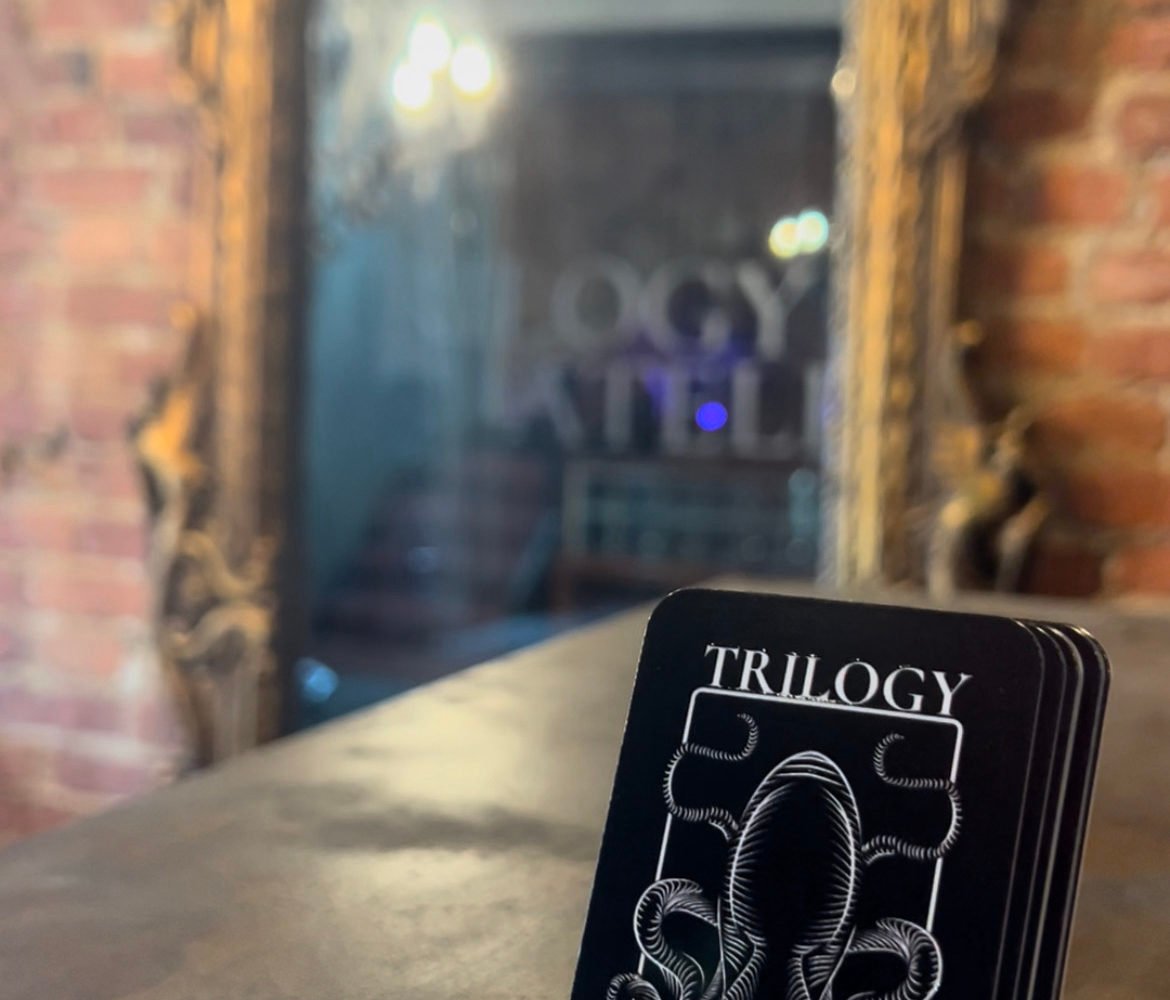Contents
In 1976, Art Lien, a recent graduate of the Maryland Institute College of Art who was working as a housepainter in Baltimore, learned that a local TV news station was looking to hire a courtroom sketch artist. After impressing the brass at WJZ Channel 13, he headed to the courthouse to cover the racketeering trial of former Maryland governor Marvin Mandel.
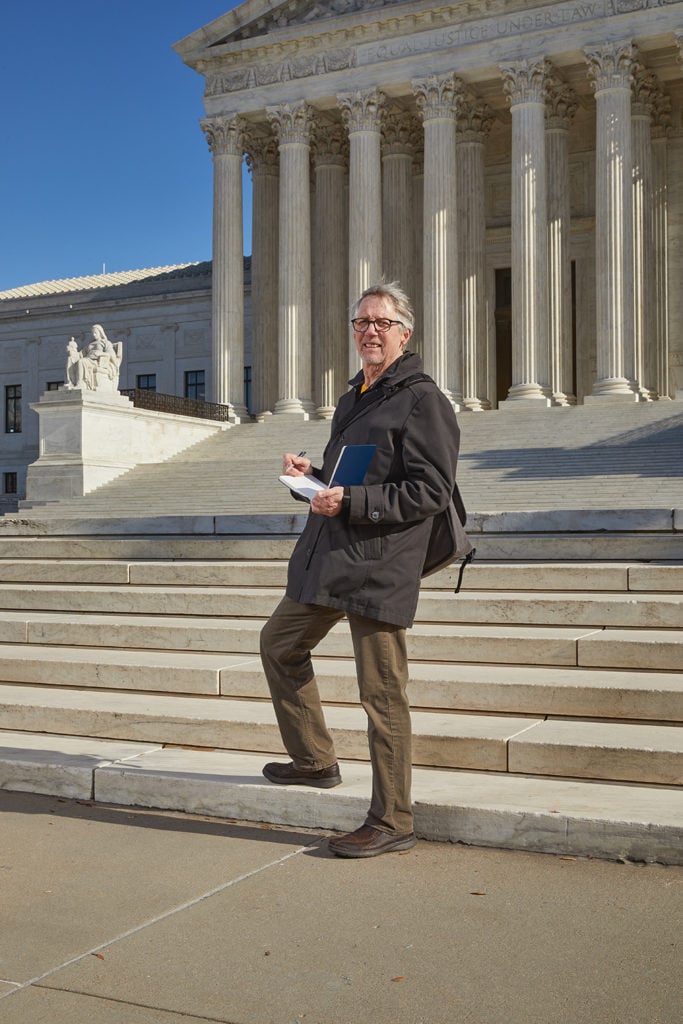
But when his watercolor paints failed to absorb into the paper, Lien produced a likeness of Mandel that was far too runny for the station to air. “They fired me after the first day,” he says.
Lien quickly improved his sketch work, got hired at national outlets—CBS, NBC, SCOTUSblog—and, over the next 46 years, captured some of the most dramatic moments in American jurisprudence: the 1997 conviction of Oklahoma City bomber Timothy McVeigh, the 2007 trial of former White House aide “Scooter” Libby, the 2016 trial of Charleston-church mass murderer Dylann Roof, and every landmark Supreme Court case in between. Along the way, as more judges began allowing video cameras into courtrooms, the number of sketch artists plummeted, and Lien eventually found himself practicing a disappearing craft. “More than an artist drawing a picture, we’re really closer to a journalist writing a story,” he says.
Lien retired in the summer of 2022. Here are some of his most memorable sketches—and the stories behind them.
New York State Rifle & Pistol Association v. City of New York
December 2019

For Lien, body language is the key to effective sketching. Focusing on hand gestures and facial expressions during this Second Amendment case stemming from a New York measure restricting the transportation of firearms, he captures the Supreme Court’s ideological divide. The late Ruth Bader Ginsburg, the famously liberal justice from New York City, delivers a cold stare at an attorney representing the pro-gun plaintiff, while conservative justice Samuel Alito looks at her skeptically. “I’ve found, actually, [that] the way a person is positioned, and the way they sit and hold themselves, is almost more important than getting the features just right,” Lien says.
I do find myself, as I’m drawing, I’m contorting my face probably in the same expression as the face that I’m drawing, so that I kind of feel it.
Back to Top
Bush v. Gore
December 2000

Over his more than four decades of sketching the Supreme Court, Lien found that some justices—such as Stephen Breyer—were easier to render than others. “Breyer: all-time greatest body language,” Lien says. “Plus, he asked these long questions, so it gave you a lot of time [to draw him].” At the other end of the spectrum was Justice Sandra Day O’Connor, whom Lien always struggled to capture. “She’s an attractive woman with no feature that really jumps out,” he says, adding that “one thing that made it very hard was when she was undergoing chemotherapy and she was wearing a wig. There was sort of this feeling like, I’m thinking that she’s thinking she’s being looked at. And also, you want to make the wig look like a wig, but you don’t want to make it look like a wig.” This sketch depicts O’Connor’s exchange with Republican lawyer Theodore Olson during oral arguments in the case that decided the 2000 presidential election and sent George W. Bush to the White House.
Back to Top
Linda Tripp’s Grand-Jury Testimony
July 1998
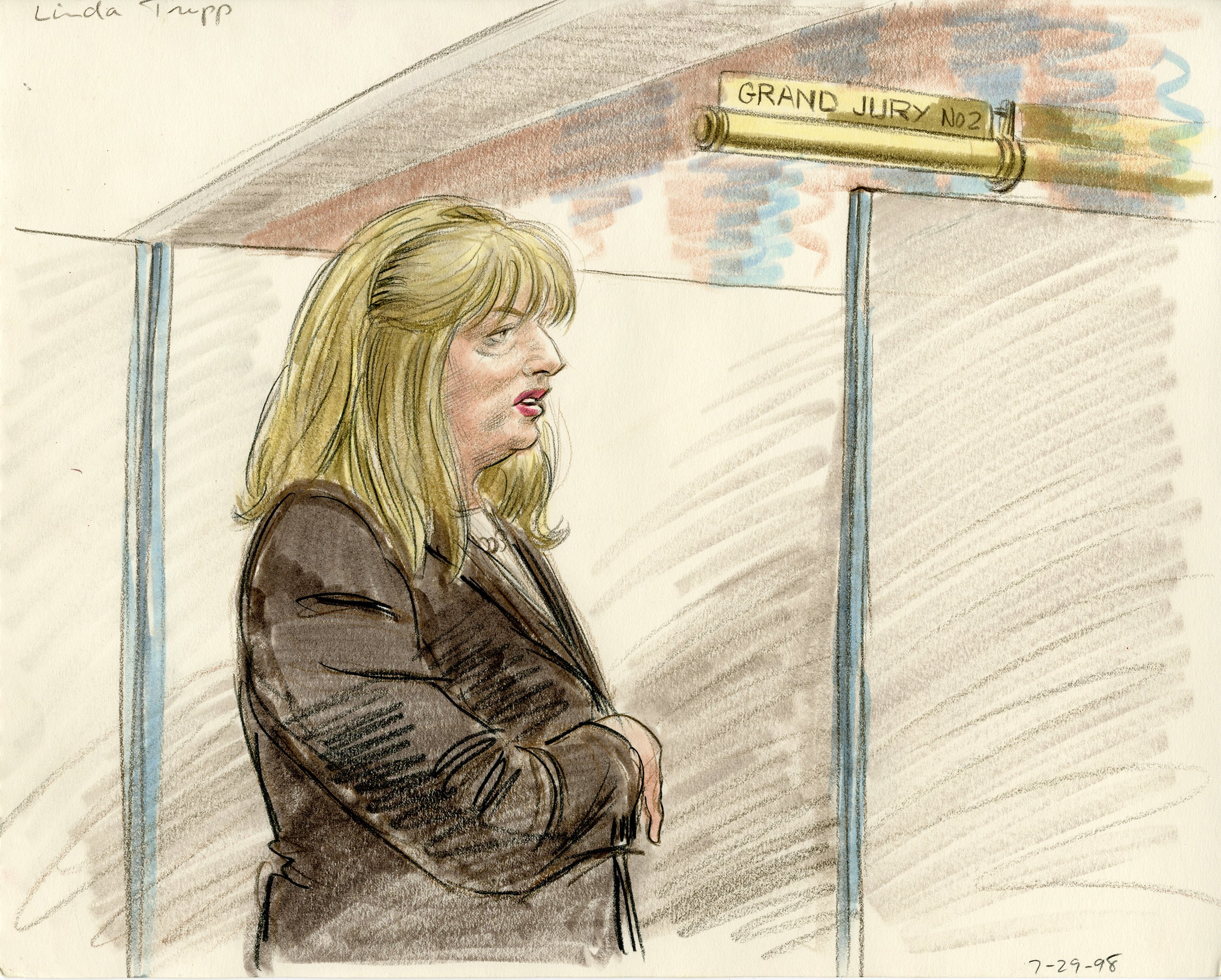
Not all of Lien’s work was done in courtrooms. To deliver this image of Linda Tripp—whose secretly taped phone conversations with Monica Lewinsky related to her sexual relationship with President Bill Clinton ultimately led to his 1998 impeachment—Lien had to stake out the hallway outside the grand-jury room where Tripp was a critical witness for independent counsel Ken Starr. Catching a five-second glimpse of Tripp when she got off an elevator, Lien worked from memory. “That was the worst part of my career,” he says. “You had to get [to the hallway] like at 5 in the morning because they only allowed ten people up there. Of course, there was a huge crowd. And once you were in the hall, you were not allowed to sit. There were no chairs. You couldn’t sit on the floor. It was terrible. We all bought inserts for our shoes [because our feet were sore].”
More than an artist drawing a picture, we’re really closer to a journalist writing a story.

Back to Top
Jack Abramoff Sentencing
September 2008

A flamboyant and high-flying lobbyist known for lavishing public officials with expensive trips and other goodies, Abramoff was the central figure in a wide-ranging corruption scandal that produced guilty pleas or verdicts for a Republican House member, two White House officials, and several other lobbyists or aides. Receiving a four-year prison sentence after pleading guilty to tax evasion, aiding and abetting mail fraud, and conspiracy charges, Abramoff begged a federal judge for mercy and said, “I have fallen into an abyss.” To capture the moment, Lien focused on Abramoff’s despondent expression. “I do find myself, as I’m drawing, I’m contorting my face probably in the same expression as the face that I’m drawing, so that I kind of feel it,” Lien says. “If you’re drawing somebody smiling, you tend to be smiling . . . but [Abramoff] was just really fallen.”
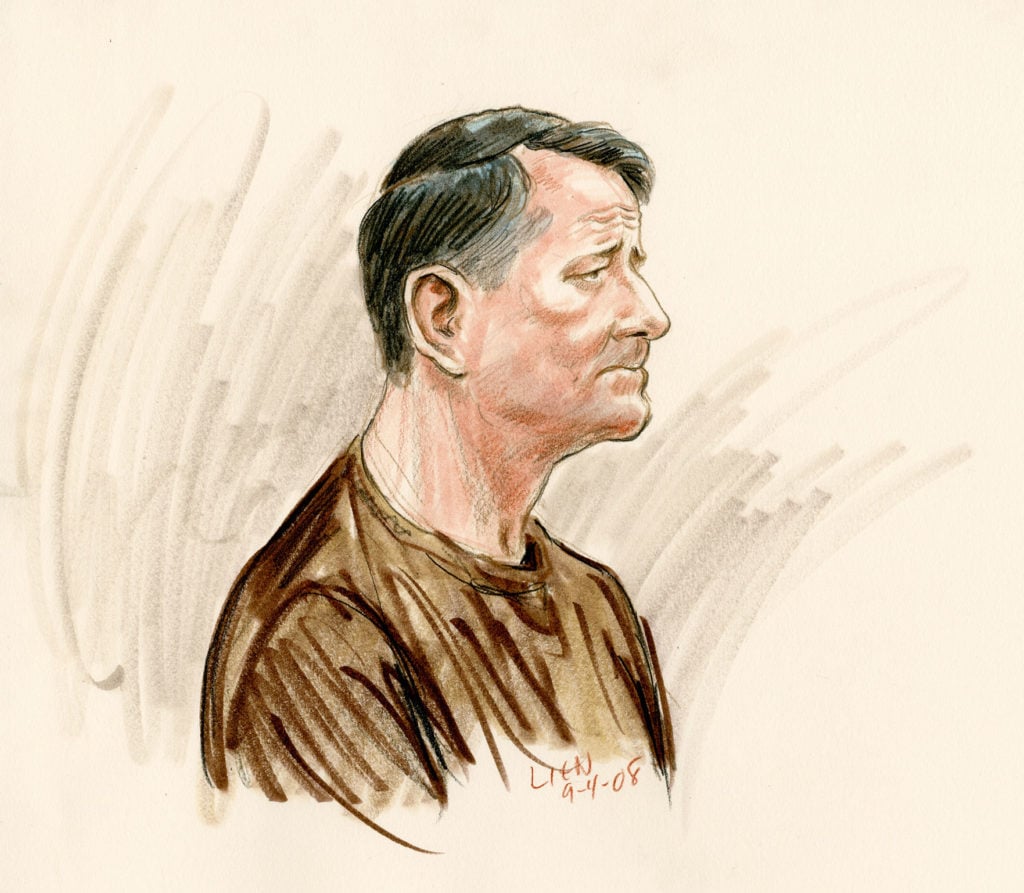
Back to Top
Rick Gates Testifies Against Paul Manafort
August 2018

For each day of any trial, Lien was expected to produce multiple sketches—from courtroom panoramas to defendant close-ups—for networks to choose from. Still, it was essential to capture a case’s climactic moments, such as when Rick Gates testified that he’d committed crimes with former business associate and Trump campaign chairman Paul Manafort during special counsel Robert Mueller’s prosecution of Manafort on fraud and conspiracy charges. To convey the sense of betrayal, Lien depicted Gates with slumped shoulders and a hangdog expression. Meanwhile, Manafort—ultimately convicted on eight counts of tax fraud, bank fraud, and a related charge—grips the armrest of his chair as if to restrain himself. “[Gates is] testifying about how he basically also stole from Manafort,” Lien says. “You know, ripped him off.”
Back to Top
Lee Boyd Malvo
March 2003
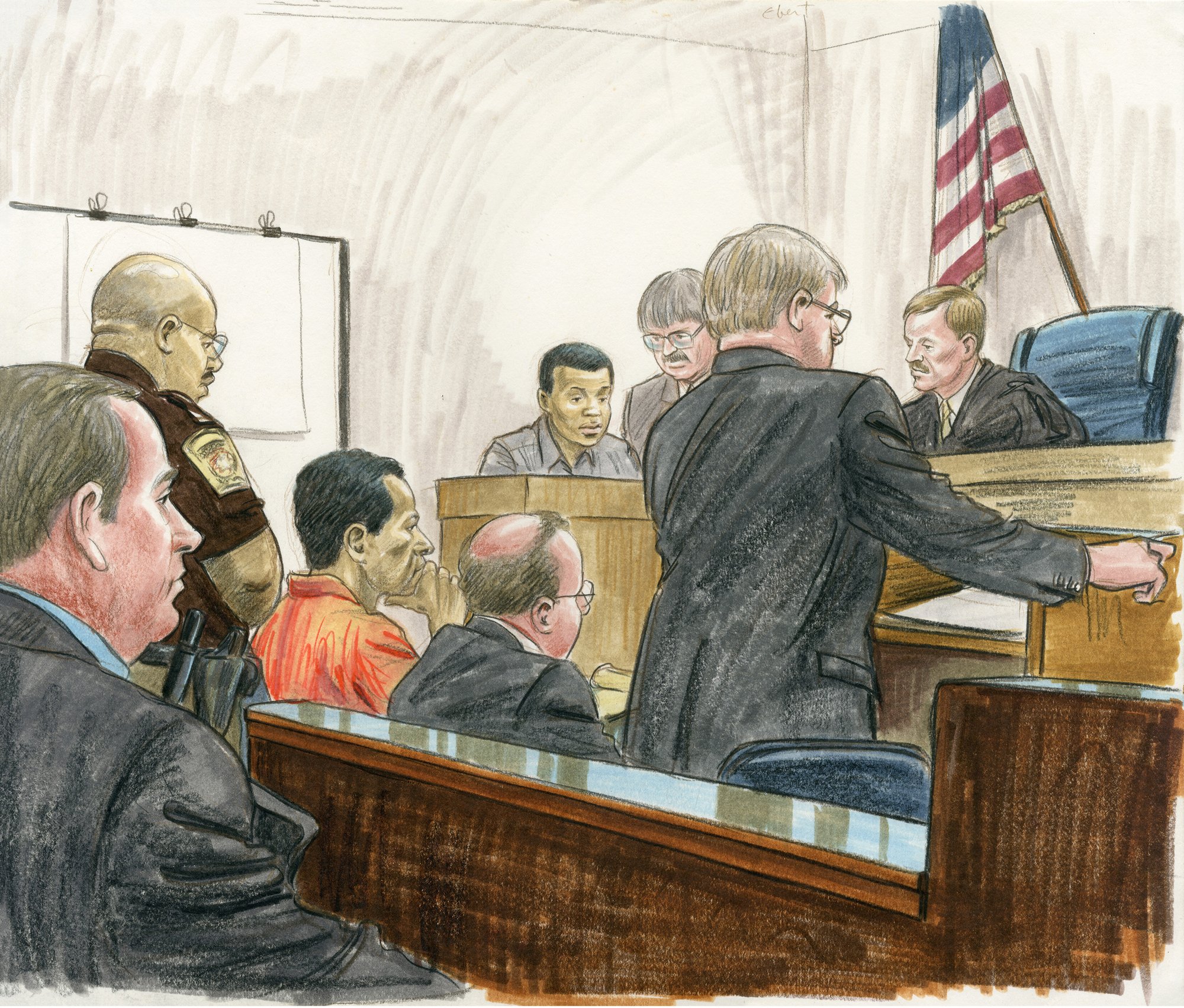
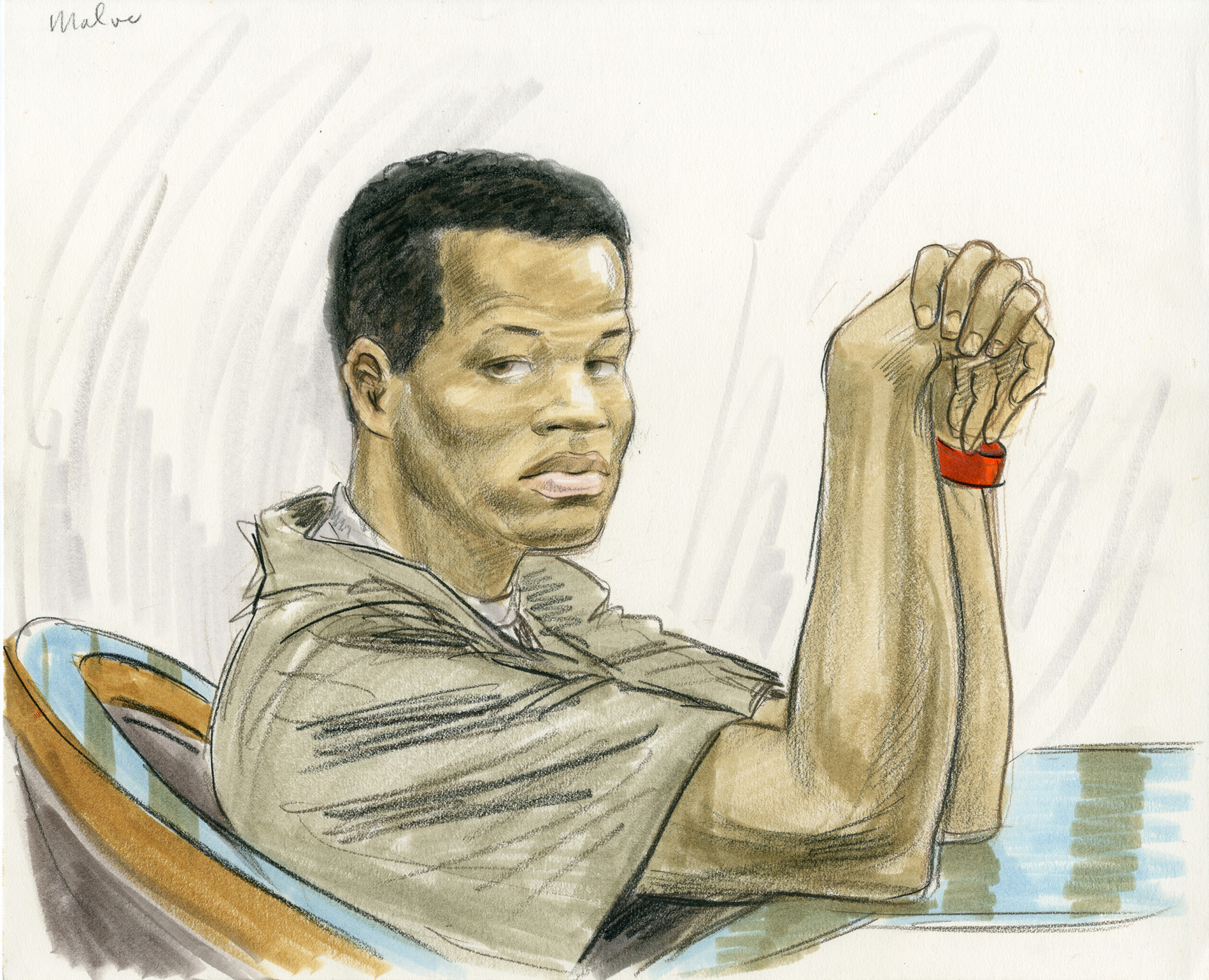
Over a three-week period in October 2002, John Allen Muhammad and Lee Boyd Malvo went on a shooting spree across the Washington area that killed ten and left three injured. At this hearing in a Fairfax County court, Malvo stares impassively at Lien, who worked primarily in Washington and lived through the terror. Lien considers objectivity a central goal of his work. “I do regard myself not at all as an artist, [but] more as a visual journalist,” he says, adding that he tries “not to put any kind of opinions—my personal opinions—in there.”
Back to Top
Former President Richard Nixon and “Deep Throat” Mark Felt
October 1980
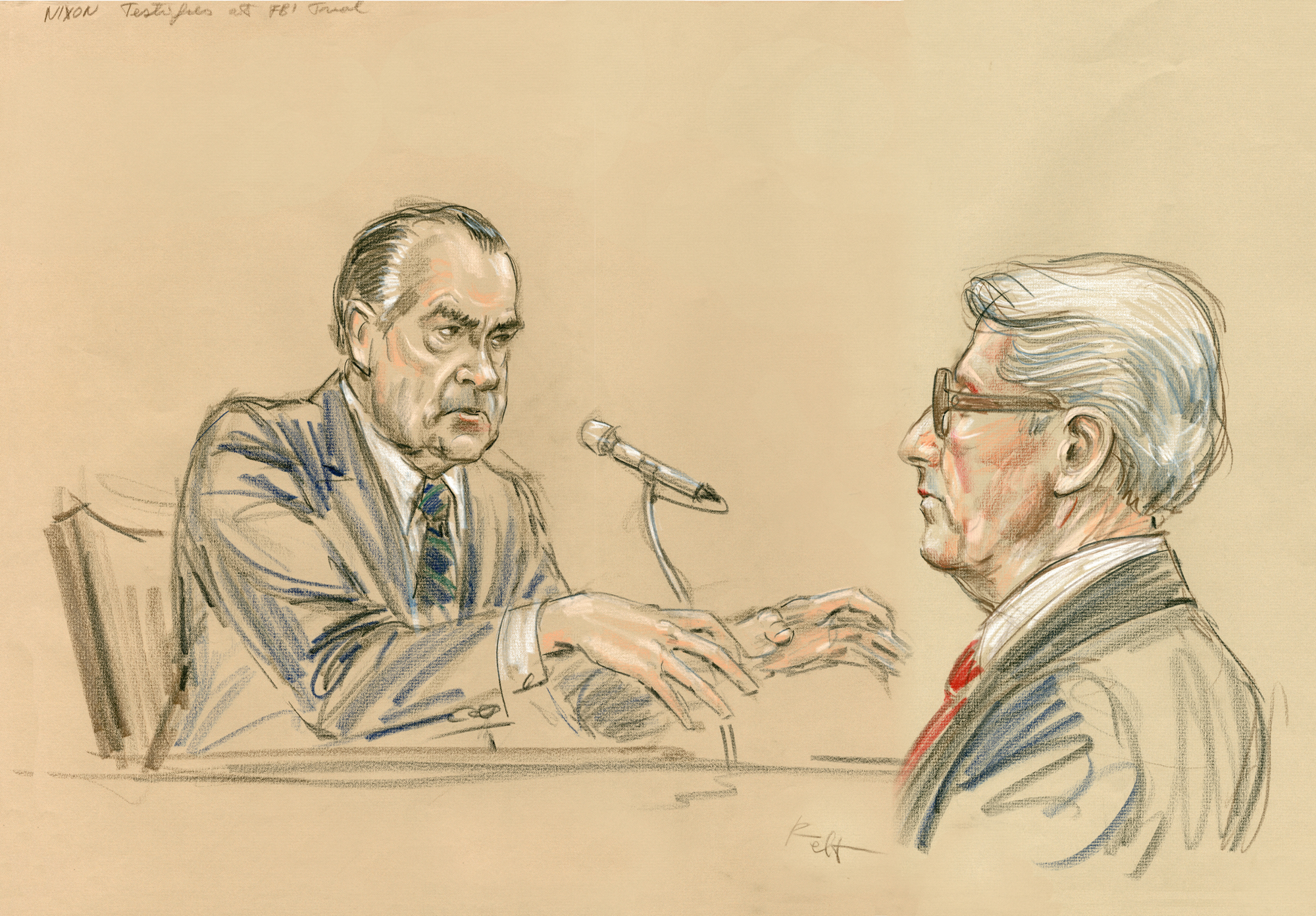
When Lien learned in 2005 that former top FBI official Mark Felt had revealed himself as the Watergate reporting source known as Deep Throat, the artist’s mind immediately returned to a courtroom image he’d captured a quarter century earlier. Back then, Felt was on trial for allegedly greenlighting warrantless home searches targeting the far-left militant group the Weather Underground. Nixon testified on his behalf—standing in the courtroom with the very man who had secretly helped the Washington Post uncover the scandal that brought down Nixon’s presidency. “I can’t imagine what Felt was thinking at the time,” Lien says.
This article appears in the February 2023 issue of Washingtonian.
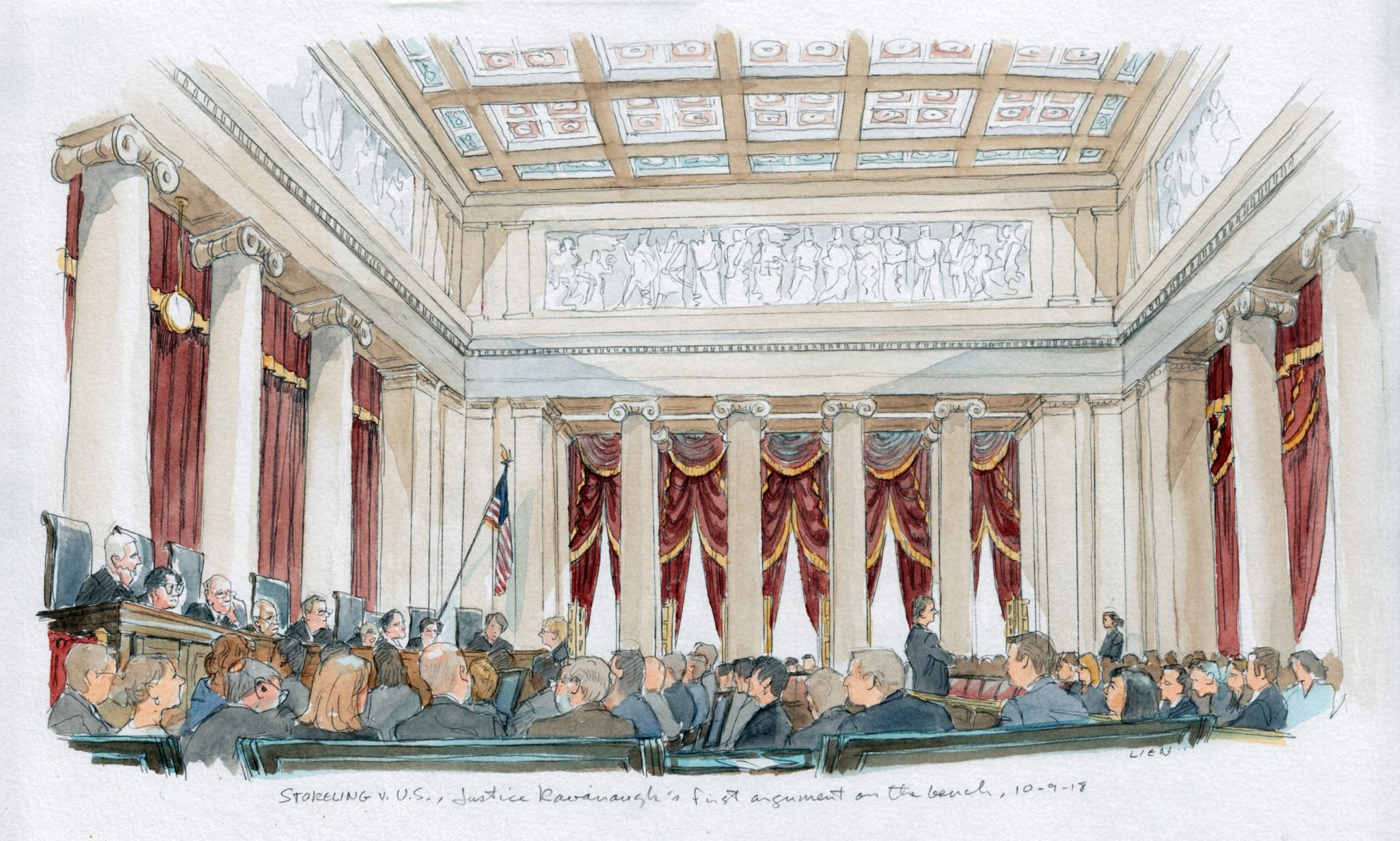
![Luke 008[2]-1 - Washingtonian](https://www.washingtonian.com/wp-content/uploads/2017/10/Luke-0082-1-e1509126354184.jpg)







